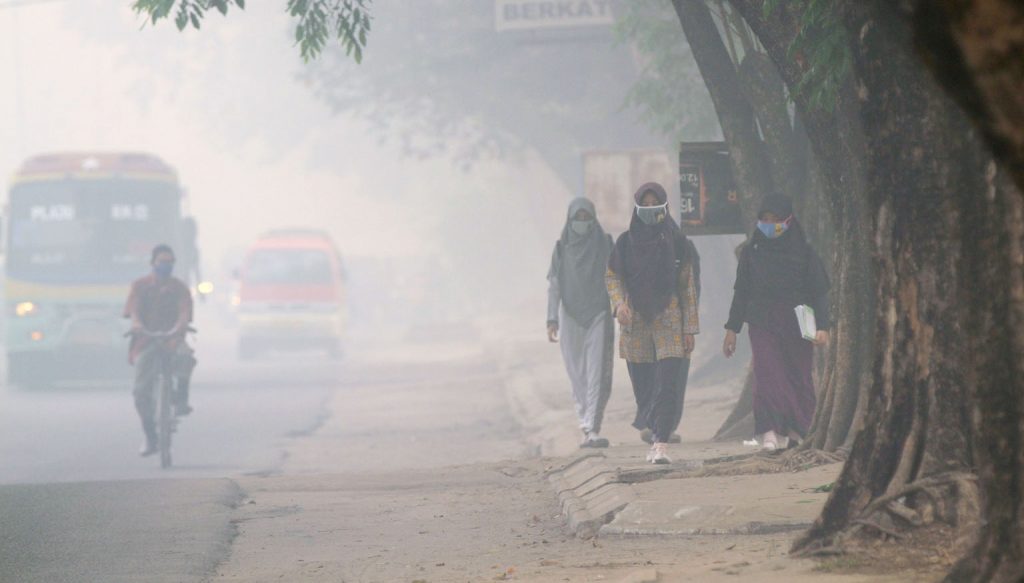
As our society enters a time of rapid advancement in technology and evolving cultural attitudes, so too is our Mother Earth experiencing a change. A profound one that affects the temperature around us and the very air that we breathe. One that will determine how we as humans will go about our lives in the future. Our world is going through a climate change on a scale that is unprecedented in history. And from the many dreadful events that arise from this occurrence, Air pollution would be one of the most catastrophic ones due to the fact that it primarily affects the basic component of life that is needed for all living things to stay functioning and healthy: the air we breathe.
Air pollution is the presence of harmful substances in the air that threatens the well being of the ecosystem. Sources of air pollution are tropospheric ozone gases (O3), sulfur oxides (SO2 and SO3), nitrogen oxides (NO and NO2), benzo(a)pyrene (BaP) and particulate matter (PM). Air pollution can negatively impact our health like adding stress to our heart and lungs, exerting them so that they can properly supply oxygen to the body, and lead to complications that could be fatal such as cancer, asthma, bronchial symptoms, lung inflammation, and reduced lung function. They also reduce the ozone layer which is responsible for protecting the Earth from harmful UV rays.
There are various factors that contribute to air pollution such as the use of fossil fuels like coal and petroleum which are fundamental to today’s modern industrial society for energy production and transportation along with exhaust from industrial processes through the carbon monoxide and chemicals they release and it’s hard to ignore it when manufacturing industries are basically everywhere. And forest fires, other than damaging the ecosystem, can also impact the air quality to a worse level while at the same time depriving the environment of much needed oxygen.
Air pollution may seem like a contemporary disaster made worse by climate change, but it is a problem that has long persisted since the beginning of the industrial revolution. Rapid industrialization and urbanization that has been ongoing since the 20th century to fulfill the needs and demands of a growing population of billions has made air pollution the prevalent and dominant issue that it is today.
And now it continues to get worse, according to WHO, more than 3 billion people are reliant on amenities that release pollutants into the air for the purpose of fulfilling their household needs, 91% of the world’s population lives in places that exceeds WHO air quality guideline limits, and estimates that 7 million people die every year from diseases related to air pollution. And recently there has been news of wildfires happening all around the world from the rainforests of the Amazon, the jungles of the Congo, and even all the way up north in the frozen tundras of Siberia all contributing to the worsening air quality.
Now as for Indonesia, haze caused by wildfires and reckless razing of forest areas completely blanket the skies of Riau and Kalimantan with Air Quality Index scores of 421 and 361 for Pekanbaru and Palangkaraya respectively to the point of reducing the visibility in these areas and now it is spreading to neighbouring countries. According to AirQualityAsia, the primary sources of air contamination in Indonesia are vehicle and industrial emissions.
But all is not lost, there are many things we can do to stop air pollution and prevent an ecological catastrophe. We can start from using public transportation, turning off our electricity when they’re not being used and using products that optimize energy usage such as CFL lights so less fossil fuels would be burned, adopting the ‘reduce, reuse, and recycle’ concept, and so much more.
Starting from these little steps would ensure that we could reverse the damage already done to the environment and pave the way towards a future where we and our descendants could enjoy clean and fresh air without the dangers of air pollution looming over.
WOODIES by Rayhan Fachrudin
CIMSliography:
- Human Resources Team SCORP-CIMSA 2019/2020
- CIMSA’s Humanitarian Response Team
- Human Rights Trainer